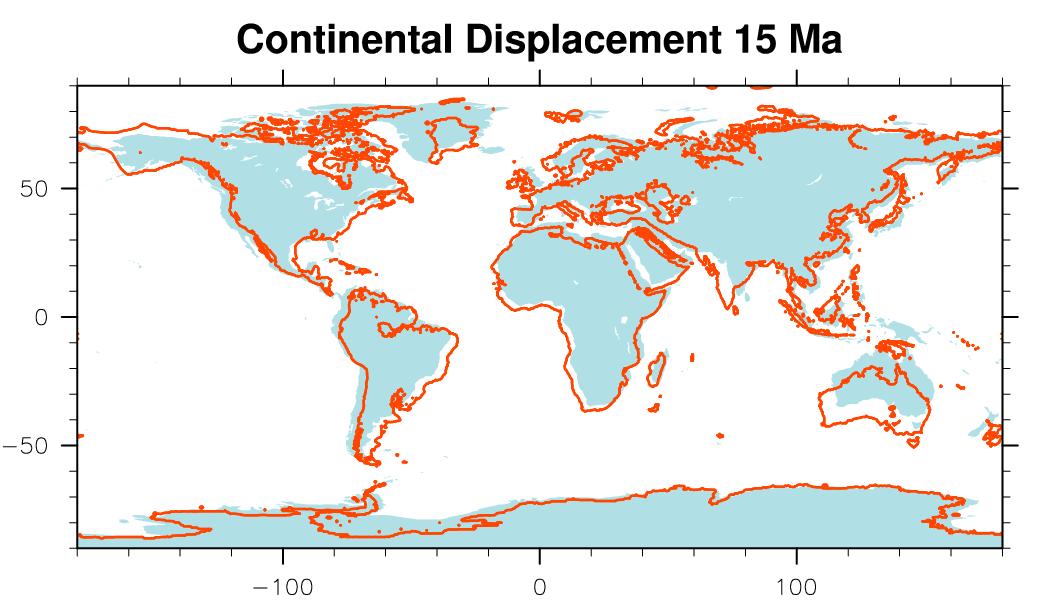|
We are interested in the warm climate of the early - middle Miocene, particularly in the mechanisms which caused such a climate to exist in the face of low carbon dioxide concentrations, the presence of an Antarctic ice sheet and a very similar global geography. Through a series of modelling experiments we aim to isolate the aspect(s) of the climate system which were responsible for this warming. This will ultiamtely involve marrying geological data with our climate results, and using such observations to drive future research.
We are using the National Center for Atmospheric Research (NCAR) Community Atmosphere Model 3.1 (CAM) coupled to the NCAR Community Land Model 3 (CLM) and plan to extend this to the fully coupled CCSM.
Differences between the MCO and the present.
 |
| Fig. 1 Continental geometry at 15 Ma (red outline) and present (blue). |
The continental configuration was similar today however with a few subtle yet important differences (Fig. 1). The Tethys seaway was open, allowing warm mediterranean waters to flow into the Indian Ocean. The Panama straight was also open. Together this provided a low latitude connection between the oceans, having important implications for ocean circulation. The Bering straight was also closed at the time, preventing Arctic - Pacific Ocean throughflow. How these changes influenced oceanography has as of yet been unexplored.
Carbon dioxide concentration during the MCO is widely debated. Evidence from carbon and boron isotopes, and leaf stomata suggest levels slightly lower than today. However models and other evidence point to significantly higher levels. This may either suggest that carbon dioxide fluctuated a great deal or that isotopically light methane masked the high levels of carbon dioxide in the geological record.
Other differences between the MCO and present include the global vegetation, topography, orbital parameters and others. All of these processes require separate quantification as well as combined modelling to determine how much of a gap remains between the current state of the art modelling and available geological data.
Contact: Nicholas Herold
|

